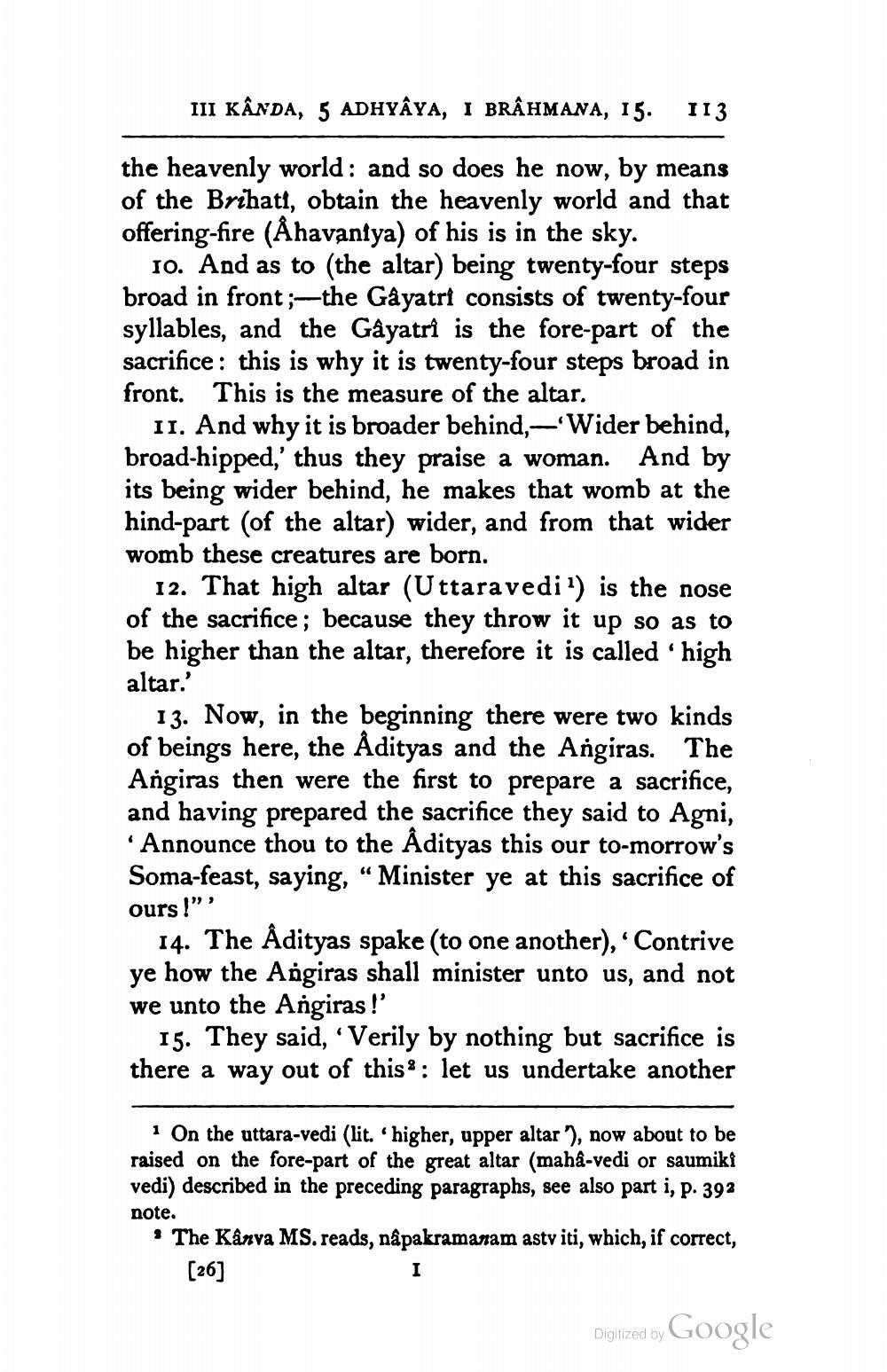________________
III KÂNDA, 5 ADHYAYA, I BRÂHMANA, 15.
113
the heavenly world: and so does he now, by means of the Brihati, obtain the heavenly world and that offering-fire (Åhavaniya) of his is in the sky.
10. And as to (the altar) being twenty-four steps broad in front;—the Gayatri consists of twenty-four syllables, and the Gayatri is the fore-part of the sacrifice: this is why it is twenty-four steps broad in front. This is the measure of the altar.
11. And why it is broader behind, — Wider behind, broad-hipped,' thus they praise a woman. And by its being wider behind, he makes that womb at the hind-part (of the altar) wider, and from that wider womb these creatures are born.
12. That high altar (Uttaravedi ) is the nose of the sacrifice; because they throw it up so as to be higher than the altar, therefore it is called 'high altar.'
13. Now, in the beginning there were two kinds of beings here, the Adityas and the Angiras. The Angiras then were the first to prepare a sacrifice, and having prepared the sacrifice they said to Agni, · Announce thou to the Adityas this our to-morrow's Soma-feast, saying, “Minister ye at this sacrifice of ours !" !
14. The Adityas spake (to one another), Contrive ye how the Angiras shall minister unto us, and not we unto the Angiras !
15. They said, 'Verily by nothing but sacrifice is there a way out of this? : let us undertake another
1 On the uttara-vedi (lit..higher, upper altar ), now about to be raised on the fore-part of the great altar (maha-vedi or saumiki vedi) described in the preceding paragraphs, see also part i, p. 392 note. * The Kånva MS. reads, napakramanam astv iti, which, if correct,
[26]
Digitized by Google




